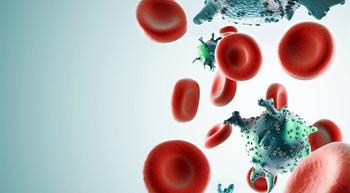
Balversa Fills a ‘Critical Need’ for Metastatic Bladder Cancer
Some patients with metastatic bladder cancer and FGFR3 genetic alterations may benefit from Balversa, as it “represents a critical need,” an expert said.
The recent approval of Balversa (erdafitinib) is crucial for patients with metastatic bladder cancer who also have FGFR3 gene mutations, an expert told CURE®.
In January, the Food and Drug Administration (FDA) approved
Balversa is a type of tyrosine kinase inhibitor that prevents the growth of cancer cells and may kill them, according to the National Cancer Institute. The drug is known to treat patients with metastatic bladder cancer which has an abnormal FGFR3 gene.
“(FGFR) is a molecule or a protein on the surface of cancer cells that is important for the growth of cancer,” Dr. Alexander Helfand, medical oncologist at Allegheny Health Network and assistant professor in the department of medicine at Drexel University College of Medicine, said during an interview with CURE®.
“It is found in 20% to 30% of patients with locally advanced or metastatic bladder cancer, (who) have genetic changes in this particular protein,” he added. “As such, it renders them vulnerable to Balversa, which is a drug that can treat patients who have this specific genetic change, which is sometimes a mutation in the FGFR2 or 3 gene.”
Helfand explained that the FDA approval of Balversa is important for this patient population, especially because it provides another treatment option.
Patients who experience progression or worsening of their bladder cancer after chemotherapy have “a number of different options,” he said. “Those options can include chemotherapy, targeted therapy and additional chemotherapy. But for patients with FGFR2 and 3 mutations or other alterations, Balversa represents an additional option for those patients, and the response rates to Balversa, are quite good in comparison to the use of chemotherapy.”
According to the BLC3001 study that led to the FDA approval, Balversa had a better median overall survival (length of time from diagnosis or start of treatment when patients are still alive) of 12.1 months, compared with 7.8 months in patients from the chemotherapy group.
Researchers also found that progression-free survival (time patients live without the disease worsening) was 5.6 months for patients receiving Balversa versus 2.7 months for patients receiving chemotherapy. The objective response rate, or the percentage of patients that have a partial or complete response to treatment, was 35.3% compared with 8.5% in the Balversa and chemotherapy groups, respectively.
WATCH:
The approval of Balversa “represents a critical need,” specifically for patients with FGFR2 and 3 mutations or fusions, Helfand said, which is how it addresses unmet needs.
He noted that although the FDA approval did not include or necessitate prior treatment of immunotherapy in this patient population, he said the approval of Balversa is a “particularly important development for those patients,” as they have “fairly limited options.”
Previous treatment for patients with metastatic bladder cancer who had FGFR3 gene mutations included chemotherapy followed by immunotherapy, Helfand said, and “may have (also) gotten a drug called Padcev, or enfortumab vedotin.”
He noted that the treatment combination of Padcev and Keytruda (pembrolizumab) is typically first-line treatment, which has been demonstrated to be “superior to chemotherapy.”
“I think the question will ultimately become whether (Balversa) has a role in the second line, meaning after (Padcev) and (Keytruda). Additional trials will be needed to give us insight into that.”
In terms of side effects, Helfand said that it’s important for patients to be aware that they will experience side effects with Balversa, just as other medical treatments do.
“One benefit is that (Balversa) is an oral drug, so you do not need to come to the clinic for infusions. But quite a few patients do have some fatigue and generalized weakness, as well as increased phosphorus levels,” he explained. “Increased phosphorus levels typically are not going to cause much in the way of symptoms but can ultimately become dangerous if they become too high, which is why physicians will check phosphorus levels fairly often.”
Another side effect of note includes eye toxicity called central serous retinopathy, said Helfand.
“(This side effect) is something that can affect your vision, which is why it's so important that you see the eye doctor regularly while getting this medication and that your oncologist knows if you're having any side effects. Most of these side effects can be managed either with medications in the eye or alternatively, reducing the dose or holding the dose of the Balversa, but it is something that patients need to be aware of.”
For more news on cancer updates, research and education, don’t forget to




